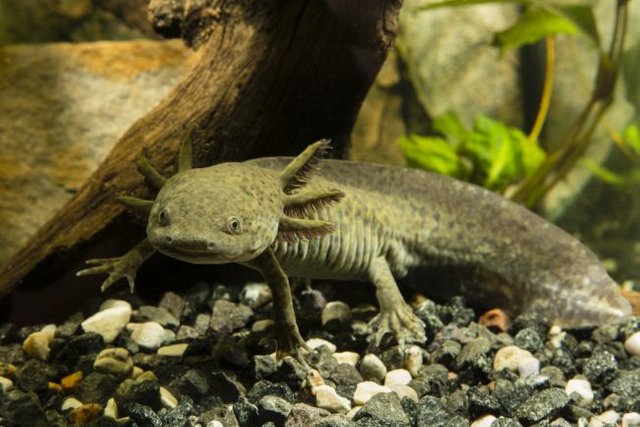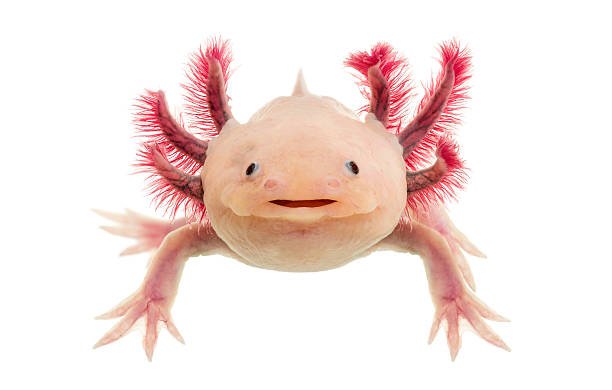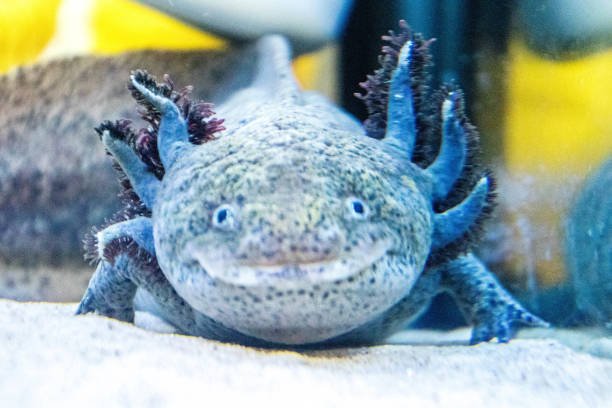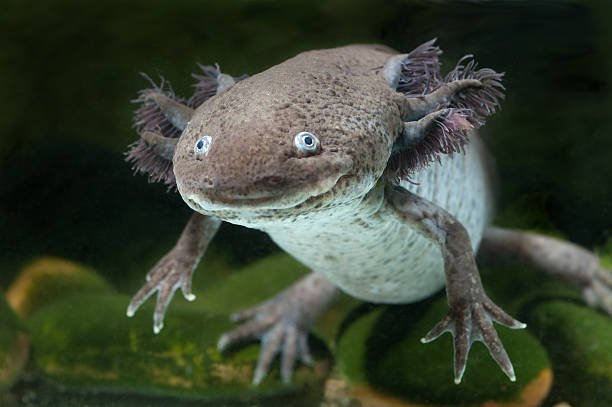
When the Aztecs settled in the Valley of Mexico around what is now Mexico City in the 13th century, they found a large salamander living in the lake surrounding the island where they built their capital, Tenochtitlán. They called the salamander "axolotl" after Xolotl, their god of fire and lightning. Xolotl was said to have transformed into a salamander among other forms, to avoid being sacrificed so the sun and moon could move in the sky; he was eventually captured and killed, according to Aztec mythology.
WHAT ARE THESE CREATURES?

Axolotls are amphibians with the scientific name: Ambystoma mexicanum. They are carnivores and have an average life span of 10 to 15 years in wild. They can grow up to 12 inches and weigh around 2.11 to 8 ounces.
But what is really wild is their ability to regenerate lost limbs and stay 'young' throughout their lives.

Unlike other salamanders that undergo metamorphosis, axolotls never outgrow their larval, juvenile stage, a phenomenon called neoteny.
Their youthful traits include feathery gills sprouting from their heads like a mane, webbed feet, a dorsal fin that runs down the length of their body, and a tail. Though they keep their gills, adult axolotls also have functional lungs and can breathe through their skin. And as if being forever-babies didn’t make them cute enough, their mouths are upturned in a permanent Mona Lisa smile.
Those sweet little smiles can quickly turn into vacuum cleaners when it’s time to eat. Axolotls suck in their prey, which includes crustaceans, mollusks, insect eggs and small fish.
In the wild, they’re mostly grayish brown in color. Lighter colored axolotls, especially those with white bodies and pink gills, are usually bred as pets.
HOW DO THEY REPRODUCE?

Axolotls, which are solitary creatures, reach sexual maturity at a year old, and their spawning season in the wild is in February. Males seek out females, possibly using pheromones, and perform a courtship "hula" dance, shaking his tail and lower body. She responds by nudging him with her snout.
The male then deposits spermatophores, or sperm packets, on the lake floor, which the female picks up with her cloaca, a body cavity, which then fertilizes her eggs.
Females can lay up to a thousand eggs (though the average is about 300) on plant material or rocks, which protects them from predators. After two weeks they hatch and, with no parental care, the larvae are off and swimming on their own.
Now you know something you didn't!!!